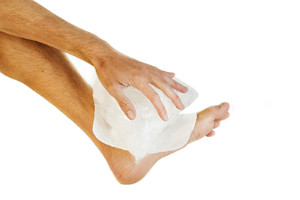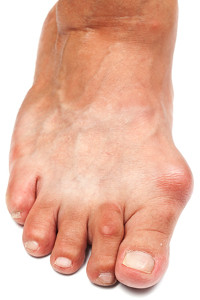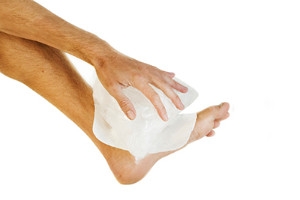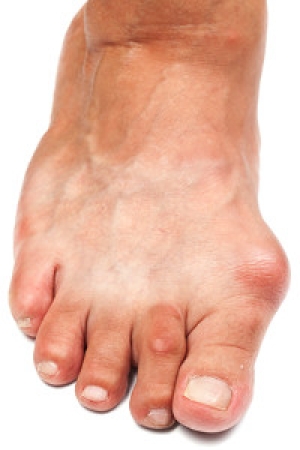Richfield (435) 896-6497
Ephraim (435) 283-4076

Treating Ankle Sprains
 Ankles are an important part of the human body's structure, since they provide the flexibility needed to walk. An ankle sprain occurs when there is a tear in the ligament. These tears can either be mild and result in a mild sprain, or they can be severe and cause a more serious sprain. Ankle sprains can happen to anyone regardless of age, and they can occur while performing any everyday activity. If you are suffering from a mild sprain, it is advised that you follow the RICE method, which stands for Rest, Ice, Elevation, and Compression. Anti-inflammatory medications may also be used to treat minor cases of ankle sprains.
Ankles are an important part of the human body's structure, since they provide the flexibility needed to walk. An ankle sprain occurs when there is a tear in the ligament. These tears can either be mild and result in a mild sprain, or they can be severe and cause a more serious sprain. Ankle sprains can happen to anyone regardless of age, and they can occur while performing any everyday activity. If you are suffering from a mild sprain, it is advised that you follow the RICE method, which stands for Rest, Ice, Elevation, and Compression. Anti-inflammatory medications may also be used to treat minor cases of ankle sprains.
Ankle sprains are common but need immediate attention. If you need your feet checked, contact Dr. Blake Zobell from Utah. Our doctor can provide the care you need to keep you pain-free and on your feet.
How Does an Ankle Sprain Occur?
Ankle sprains take place when the ligaments in your ankle are torn or stretched beyond their limits. There are multiple ways that the ankle can become injured, including twisting or rolling over onto your ankle, putting undue stress on it, or causing trauma to the ankle itself.
What Are the Symptoms?
- Mild to moderate bruising
- Limited mobility
- Swelling
- Discoloration of the skin (depending on severity)
Preventing a Sprain
- Wearing appropriate shoes for the occasion
- Stretching before exercises and sports
- Knowing your limits
Treatment of a Sprain
Treatment of a sprain depends on the severity. Many times, people are told to rest and remain off their feet completely, while others are given an air cast. If the sprain is very severe, surgery may be required.
If you have suffered an ankle sprain previously, you may want to consider additional support such as a brace and regular exercises to strengthen the ankle.
If you have any questions please feel free to contact one of our offices located in Richfield and Ephraim, Utah . We offer the newest diagnostic and treatment technologies for all your foot and ankle needs.
Bunion Therapy
 While most people tend to take having pain free feet for granted, people with bunions do not have this privilege. A common myth is that only people of old age develop bunions; this, however, isn't often true. Approximately 30% of adolescents have developed bunions, and a majority of these bunion sufferers are girls. While footwear is commonly a cause of the deformity, genetics are also capable of playing a role in its development. Bunion treatment depends heavily on the severity of the condition. In mild cases, shoe inserts and wider shoes can be helpful; in severe cases, however, surgery may be needed. Nevertheless, you should have your podiatrist determine the severity of your bunion so that he or she can provide the best route of treatment for you.
While most people tend to take having pain free feet for granted, people with bunions do not have this privilege. A common myth is that only people of old age develop bunions; this, however, isn't often true. Approximately 30% of adolescents have developed bunions, and a majority of these bunion sufferers are girls. While footwear is commonly a cause of the deformity, genetics are also capable of playing a role in its development. Bunion treatment depends heavily on the severity of the condition. In mild cases, shoe inserts and wider shoes can be helpful; in severe cases, however, surgery may be needed. Nevertheless, you should have your podiatrist determine the severity of your bunion so that he or she can provide the best route of treatment for you.
If you are suffering from bunions, contact Dr. Blake Zobell of Utah. Our doctor can provide the care you need to keep you pain-free and on your feet.
What Is a Bunion?
A bunion is formed of swollen tissue or an enlargement of boney growth, usually located at the base joint of the toe that connects to the foot. The swelling occurs due to the bones in the big toe shifting inward, which impacts the other toes of the foot. This causes the area around the base of the big toe to become inflamed and painful.
Why Do Bunions Form?
Genetics – Susceptibility to bunions are often hereditary
Stress on the feet – Poorly fitted and uncomfortable footwear that places stress on feet, such as heels, can worsen existing bunions
How Are Bunions Diagnosed?
Doctors often perform two tests – blood tests and x-rays – when trying to diagnose bunions, especially in the early stages of development. Blood tests help determine if the foot pain is being caused by something else, such as arthritis, while x-rays provide a clear picture of your bone structure to your doctor.
How Are Bunions Treated?
- Refrain from wearing heels or similar shoes that cause discomfort
- Select wider shoes that can provide more comfort and reduce pain
- Anti-inflammatory and pain management drugs
- Orthotics or foot inserts
- Surgery
If you have any questions, please feel free to contact one of our offices located in Richfield and Ephraim, Utah . We offer the newest diagnostic and treatment technologies for all your foot care needs.
Why it is Important to See a Podiatrist
 While many people tend to be concerned with the appearance of their toenails, it is crucial that the overall health of your feet is taken care of as well. This is why it is important that you have a podiatrist who can treat all your foot and ankle related problems. One of the more common problems that people go to a podiatrist for are ingrown toenails. The fact that podiatrists specialize in treating feet allows them to treat ingrown toenails with minimal pain. One podiatrist says, “I see countless people who were traumatized when treated elsewhere. This breaks my heart every time one of these patients walks into my office.” Seeking help from a podiatrist may be very beneficial when you are experiencing issues with your feet.
While many people tend to be concerned with the appearance of their toenails, it is crucial that the overall health of your feet is taken care of as well. This is why it is important that you have a podiatrist who can treat all your foot and ankle related problems. One of the more common problems that people go to a podiatrist for are ingrown toenails. The fact that podiatrists specialize in treating feet allows them to treat ingrown toenails with minimal pain. One podiatrist says, “I see countless people who were traumatized when treated elsewhere. This breaks my heart every time one of these patients walks into my office.” Seeking help from a podiatrist may be very beneficial when you are experiencing issues with your feet.
If you are experiencing pain in the feet or ankles, don’t join the stubborn majority refusing treatment. Feel free to contact Dr. Blake Zobell from Utah. Our doctor can provide the care you need to keep you pain-free and on your feet.
What Is a Podiatrist?
Someone would seek the care of a podiatrist if they have suffered a foot injury or have common foot ailments such as heal spurs, bunions, arch problems, deformities, ingrown toenails, corns, foot and ankle problems, etc.
Podiatric Treatment
A podiatrist will treat the problematic areas of the feet, ankle or lower leg by prescribing the following:
- Physical therapy
- Drugs
- Orthotic inserts or soles
- Surgery on lower extremity fractures
A common podiatric procedure a podiatrist will use is a scanner or force plate which will allow the podiatrist to know the designs of orthotics. Patients are then told to follow a series of tasks to complete the treatment. The computer will scan the foot a see which areas show weight distribution and pressure points. The podiatrist will read the analysis and then determine which treatment plans are available.
If you have any questions please feel free to contact one of our offices located in Richfield and Ephraim, Utah . We offer the newest diagnostic and treatment technologies for all your foot and ankle needs.











